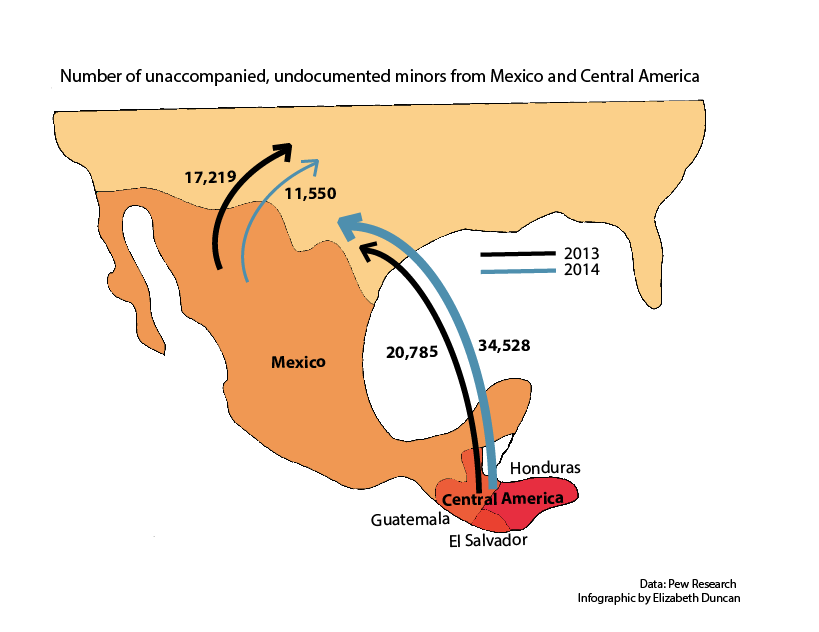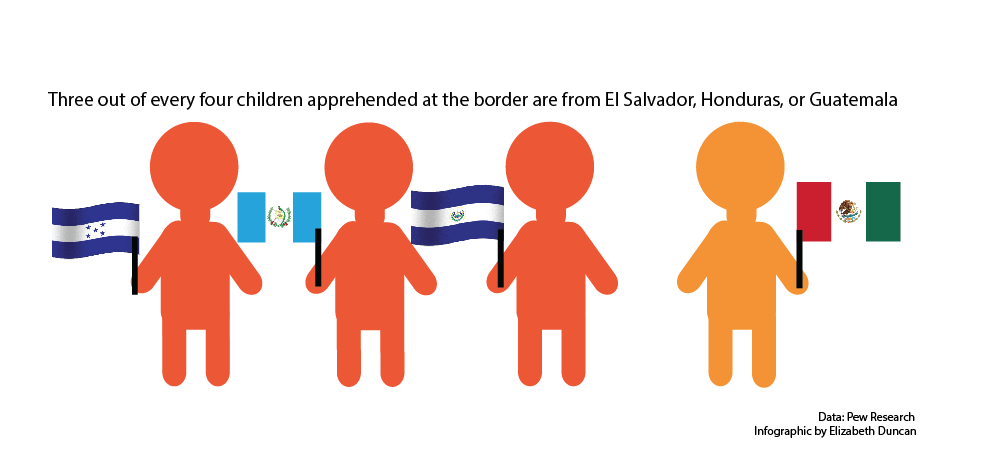More than five million undocumented immigrants will be granted temporary residence in the United States in accordance with President Obama’s executive action, as announced in a speech on Friday, Nov. 22.
This controversial immigration reform will be beneficial to many specific undocumented families who have been residing in the United States for more than five years. However, this does not include the approximately 50,000 unaccompanied children who immigrated here alone in this last year.
Because an executive action requires no congressional approval, it is easier to revoke by the following president, and this means that in two years when Obama’s term is over, the next president could easily reverse Obama’s action.

Tom Wilson, Director of the Canal Alliance, an organization in San Rafael that provides support to immigrants through a variety of program, said this will not be a permanent solution.
“Then it will be gone, and these people will be deportable once again,” Wilson said. “In a way, it is playing politics with people’s lives.”
In Marin County, about 5.6 percent of the population is comprised of unauthorized immigrants, according to an estimation conducted by the Public Policy Institute of California in 2008.
Wilson said that recently, the majority of immigrants the Canal Alliance has been helping are from Guatemala. However, in the past, the population was more Mexican.
Freshman Diego Kroell moved here legally from Guatemala four months ago. In a recent interview conducted in Spanish, he said that although it is difficult living here right now because he does not speak the language, he is glad he moved.
“Guatemala is a country where you earn little money and work a lot,” Kroell said. “In the United States, you work a lot but earn a lot.”
According to Wilson, immigrants come to America looking for a better economy and safety.
Junior Xenia Rodriguez immigrated from El Salvador legally with her family seven years ago for the educational and job opportunities offered in the United States.
“The government is having such a struggle against the violence,” Rodriguez said. “You can’t really be safe anywhere you go. There are definitely a lot better opportunities here than there are there economically and academically. In general, it’s a better environment to grow up in.”
According to Kroell, there is much violence in Guatemala and the government is corrupt and hypocritical.
“In Guatemala there are many deaths,” Kroell said. “And the people kill because they like it and because of ambition.”
According to Rodriguez, even though she was raised in a relatively safe “bubble” in San Salvador, every Salvadoran knows someone who has been affected by violence.
However, the process to get approved to move to the United States took many years, and according to Rodriguez, it has only gotten more difficult.
“My parents knew we were moving all along, but they only told me when our residence was approved. It was crazy because in a matter of two months my whole life changed. I didn’t even know we were coming here,” Rodriguez said.

Because the legal immigration policy is very complicated and it takes years to get approved, illegal immigration has become the last resort for many. Only 44,000 migrants were able to move to the United States legally from Central America in 2013, according to Pew Research.
The total number of unaccompanied immigrant children moving to the United States is almost twice as high this year as it was in the last fiscal year, according to Pew Research.
Three out of every four children apprehended at the border this year are from Central America. The majority of the children come from either El Salvador, Honduras, or Guatemala.
The Canal Alliance has assisted 117 unaccompanied children immigrants to obtain temporary residence in the United States, according to Wilson.
The Canal Alliance aids unaccompanied children who have been put into shelters in the United States by filing paperwork to get the children out of the shelters and flying them to Marin to assist them through the legal process.
Through the Marin County Courts and the Immigration Courts, the Canal Alliance is able to receive Special Immigrant Juvenile Status (SIJS) for the children, giving them the children the ability to live and work in the U.S. According to Wilson, in order to get this status, they must prove these youth have been abandoned, abused, or neglected by one or more parents.
“The Canal Alliance recognizes that the economy needs immigrants,” Wilson said. “It’s not that they were always welcome with open arms, but the laws against immigration have never been as strict as they are now.”
More than 400,000 undocumented immigrants were deported last year, according to a report by the U.S. Department of Homeland Security.
The number of deportations has constantly increased in the past years. The Obama administration has deported as many immigrants in five years that the Bush administration deported in eight, according to Pew Research. This is interesting because the number of illegal immigrants has dropped since 2008.
However, as of 2012, about 580,000 children have seen some relief through the policy known as the Deferred Action for Childhood Arrivals.
Often, the deportation process takes years because the waiting period to appear at immigration court is about two years. However, this summer a policy enacted by the Executive Office for Immigration Review moved these unaccompanied children to the front of the line, which quickened their deportation process, according to Wilson.
Wilson added that the courts are now seeing children at a rate of about 60 a day, and the children are not automatically given legal representation in Immigration Court.
“They are little kids appearing before a judge and having to try and tell their story in a language they do not speak or understand,” Wilson said. “Most of those kids are deported. If we could get those kids represented, most of those kids have some kind of case to stay.






